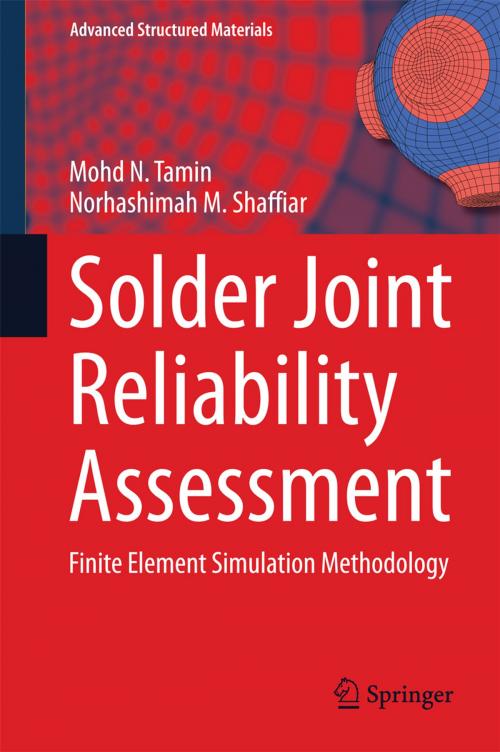Solder Joint Reliability Assessment
Finite Element Simulation Methodology
Nonfiction, Science & Nature, Technology, Material Science, Science, Physics, Mechanics| Author: | Mohd N. Tamin, Norhashimah M. Shaffiar | ISBN: | 9783319000923 |
| Publisher: | Springer International Publishing | Publication: | April 26, 2014 |
| Imprint: | Springer | Language: | English |
| Author: | Mohd N. Tamin, Norhashimah M. Shaffiar |
| ISBN: | 9783319000923 |
| Publisher: | Springer International Publishing |
| Publication: | April 26, 2014 |
| Imprint: | Springer |
| Language: | English |
This book presents a systematic approach in performing reliability assessment of solder joints using Finite Element (FE) simulation. Essential requirements for FE modelling of an electronic package or a single reflowed solder joint subjected to reliability test conditions are elaborated. These cover assumptions considered for a simplified physical model, FE model geometry development, constitutive models for solder joints and aspects of FE model validation. Fundamentals of the mechanics of solder material are adequately reviewed in relation to FE formulations. Concept of damage is introduced along with deliberation of cohesive zone model and continuum damage model for simulation of solder/IMC interface and bulk solder joint failure, respectively. Applications of the deliberated methodology to selected problems in assessing reliability of solder joints are demonstrated. These industry-defined research-based problems include solder reflow cooling, temperature cycling and mechanical fatigue of a BGA package, JEDEC board-level drop test and mechanisms of solder joint fatigue. Emphasis is placed on accurate quantitative assessment of solder joint reliability through basic understanding of the mechanics of materials as interpreted from results of FE simulations. The FE simulation methodology is readily applicable to numerous other problems in mechanics of materials and structures.
This book presents a systematic approach in performing reliability assessment of solder joints using Finite Element (FE) simulation. Essential requirements for FE modelling of an electronic package or a single reflowed solder joint subjected to reliability test conditions are elaborated. These cover assumptions considered for a simplified physical model, FE model geometry development, constitutive models for solder joints and aspects of FE model validation. Fundamentals of the mechanics of solder material are adequately reviewed in relation to FE formulations. Concept of damage is introduced along with deliberation of cohesive zone model and continuum damage model for simulation of solder/IMC interface and bulk solder joint failure, respectively. Applications of the deliberated methodology to selected problems in assessing reliability of solder joints are demonstrated. These industry-defined research-based problems include solder reflow cooling, temperature cycling and mechanical fatigue of a BGA package, JEDEC board-level drop test and mechanisms of solder joint fatigue. Emphasis is placed on accurate quantitative assessment of solder joint reliability through basic understanding of the mechanics of materials as interpreted from results of FE simulations. The FE simulation methodology is readily applicable to numerous other problems in mechanics of materials and structures.















